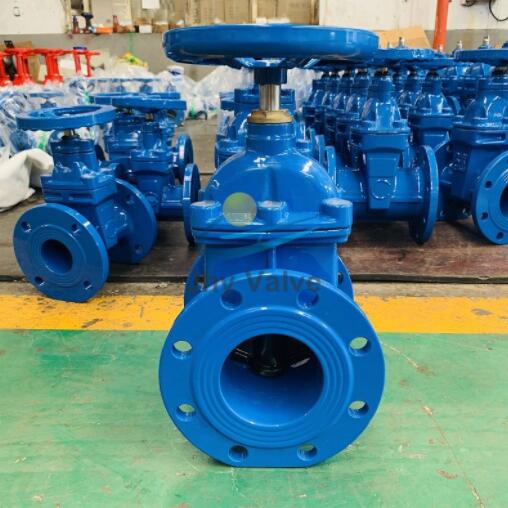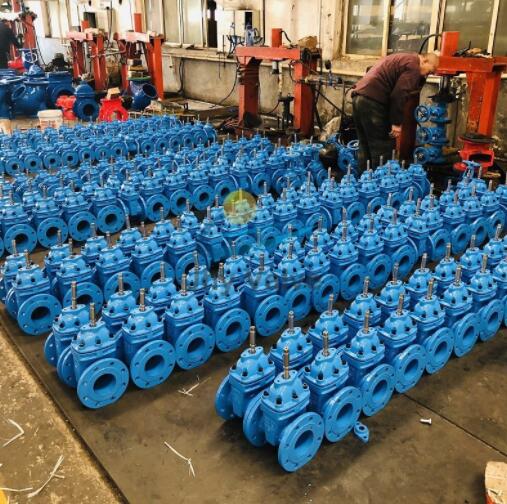Valves - Choosing between Ductile Iron and Cast Iron
Customers from a wide range of industries require a variety of valves to meet their demanding processes. Valves are available in a large variety of materials for any conceivable application. Some of these materials are PVC, carbon steel, stainless steel, cast iron and ductile iron. In this article, we will focus on two of these materials: ductile iron and cast iron.
Customers from a wide range of industries require a variety of valves to meet their demanding processes. Valves are available in a large variety of materials for any conceivable application. Some of these materials are PVC, carbon steel, stainless steel, cast iron and ductile iron. In this article, we will focus on two of these materials: ductile iron and cast iron. The "ductile vs. cast iron valve" debate has been going on for decades, because not everyone knows the difference.
Fortunately, comparing valves made of Gravel Pump and cast iron is simple, as there are only a few major differences between these materials. We will outline the characteristics of both materials and then present the advantages and disadvantages of each. By the end of this blog post, you'll be an iron expert!

Popular DIN 3352 F4 Ductile Iron Resilient Seat Gate Valve Made in China
Cast Iron Valve Specifications
Cast iron (also known as gray iron) is a metal that has been used for centuries. It is an alloy made of 96-98% iron, 2%-4% carbon and a small amount of silicone. It has impressive temperature tolerance, with some cast irons capable of handling temperatures in excess of 2100F (1150C). In terms of pressure, the strength of cast iron depends on its pressure rating. The two most common are Grade 125 and Grade 250. At less extreme temperatures, Class 125 cast iron flanges are rated between 150 and 200 psi. Class 250 cast iron is tougher and is rated from 300 to 500 psi. these pressures may vary depending on the end type.
Cast iron is strong and usually does not break, even after strong vibration. The main disadvantage of cast iron valves is that they are not very ductile. Almost any bending will cause cast iron to crack and become useless. One of the major advantages of cast iron is that it is not very expensive. As far as metals go, cast iron is usually the most economical choice, which makes it a reliable choice for people on a budget.
Ductile Valve Specifications
The second material we are looking at is ductile iron. Ductile iron is a more modern iron alloy made of spheroidal graphite. This gives the material excellent ductility, so it won't necessarily break when bent. Temperature limits are slightly lower than cast iron, but still quite high at 1350F (730C). In terms of pressure, ductile iron valves also use pressure grades: 150 and 300. 150 grade ductile iron maintains a seal of up to 250 psi at standard outdoor temperatures. 300 grade can withstand pressures up to 640 psi.
Ductile iron has excellent corrosion resistance, tensile strength and yield strength. Unlike cast iron, ductile iron does not fracture when bent, making it more suitable for demanding applications. Ductile iron is a strong and reliable material for pipes, fittings and valves. One drawback is the price. Because of its more complex chemical composition, ductile iron is usually more expensive than cast iron. However, if your application requires a tougher material, you may need to spend a little more.

Popular DIN 3352 F4 Ductile Iron Resilient Seat Gate Valve Made in China
Ductile Iron Valves vs. Cast Iron Valves
Now that we have looked at these two options separately, we will compare and contrast ductile iron and cast iron valves. Hopefully this will help you decide which is best for you! We'll compare the price, durability and ease of installation of these materials so you know the most important details.
Price
â— Cast Iron: Compared to ductile iron valves, cast iron valves will save you a lot of money due to their simpler manufacturing process. If you don't need the additional benefits that ductile iron offers, cast iron is the smart move.
â— Ductile Iron: Ductile iron is the more expensive option, but for good reason. In many cases, it offers significantly better properties than cast iron.
Durability
â— Cast Iron: Cast iron is a strong material that can withstand higher pressures than any plastic. However, when the pressure rating of a cast iron valve or pipe is exceeded, it may bend and crack. Cast iron has almost zero ductility, which means it is rigid and will break if bent. Cast iron will also rust over time, so regular maintenance is necessary to keep the valve free from corrosion.
â— Ductile Iron: Ductile iron also has impressive structural integrity. It can handle high pressures and temperatures without retreating. Due to its ductility, this material is also less likely to crack when bent. Ductile iron will also rust over time, but not as easily as cast iron.
Easy to install
â— Cast Iron: This material offers the user many options when it comes to installation. Cast iron valves are typically bolted using flanges. Welding is difficult, but not impossible. Our cast iron valves are available with flanged ends, as this is an excellent method for high or low pressure applications.
â— Ductile Iron: Ductile iron offers the user many of the same installation options due to its similarity in construction to cast iron. Welding is not recommended, but bolted connections using flanges are still the best option for most applications.
There you have it! Now you know it's not a matter of "tough vs. cast iron valves" or anything like that. One isn't always better than the other. It all depends on what you are using it for!
